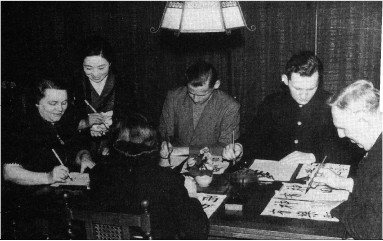Welcome to the 7th installment of the Asian History Carnival, a project of Jonathan Dresner and the Asian History blog Frog In A Well. For this installment I have decided to, instead of using the usual geographic classification, separate posts into three broad thematic categories. First “History Wars,” for posts and articles about attempts by contemporary people and nations to control the memory of the past. This title comes from the excellent book of the same name, which I read recently. Next are History Finds, posts in which the author presents his or her own research or discovery of some not commonly known piece of history. Finally we have History Lessons-posts which are, in some form, teaching history. Of course this overlaps with the other two categories, so this section includes only posts which do not fit the criteria of either of the other two. That is, they are presenting history which is, if not necessarily well known, something which can be discovered from conventional sources, and not based on the personal discovery of the previous category.
History wars
With all the controversy over the ABC Road to 9.11 miniseries, the US public is finally getting a taste of the history wars that East Asians are continually waging.
There’s always some sort of territorial dispute going on in East Asia. If it isn’t Russians arresting Japanese fishermen over islands nobody really cares about, it’s Japan arresting Taiwanese fisherman over other islands nobody cares about. Or maybe a Korean guy engaging in an awesome protest stunt for obscure reasons.
While there was a miniscule controversy over a poorly drawn map on the Okinwana prefectural website showing Tsushima, an island which is actually part of Nagasaki prefecture, as foreign territory, the current major fad in East Asian territorial disputes has to be over Koguryo, an ancient kingdom on the Korean penninsula that ceased existing in the year 668, after being defeated and absorbed by the rival Silla kingdom, with plenty of help from Tang China. One might think that disputes over the borders of Koguryo would have ended back then, but sadly things are not that simple.
What do you need to know to understand this? Well, it might not hurt to read up on Koguryo history a little. (And it might not hurt to check out Tang China, Silla, and so on while you’re there.) Then try The Korea-China Textbook War–What’s It All About? from History News Network. This article is from back in March and may have been in a previous edition of this history carnival, but it’s good background. Next try this article on The “history war” Between China and SK, which while published in the Asia Times Online, is written by the blogger Andrei Lankov, of North Korea Zonesome comments in response to this article, as well as links to some Korean coverage of the battle. There are of course plenty of other bloggers discussing this issue as well.
As speculation mounts (again) that the Kim dynasy of North Korea may be weakening, a post-collapse scenario by Robert Kaplan has been making the rounds. This is where the academic debate over ancient territorial borders starts to have a practical result. After the DPRK collapses, does China get to grab part of the former North Korea to protect their territorial integrity from ethnic Koreans in China who want to rejoin their distant relatives? Does the newly Unified Korea get to grab nearby territory in China because of the significant Korean minority? Time to bust out the historical precedent-no matter how flimsy or dusty. You can find discussion of this article by bloggers at DPRK Studies, GI Korea, or in the comments thread at the Robert Kaplan fan-blog Cominganarchy.com. Yes, in the end it’s just speculation about the future. But in the end this is exactly what the History Wars discussed just above are really all about.
Antti Leppänen, a Finn who blogs on Korea, reports on the possible rehabilitation of Pak Hôn-yông , “Southern-born communist leader who went over to the North before the establishment of separate states, was a member of the early DPRK leadership and was given the responsibility for the failures of the Korean War and executed in 1955 for having been a ‘spy for the American imperialists.'” Does this amount to an admittance of fault by the Kim dynasty? Is the initial report even true? Like most developments in North Korea, we have more speculation than hard fact.
Is it already 30 years since Mao’s death? Try comparing this Apply Daily article with this one from Canada.
Is Taiwan “China”? The debate has raged for decades, if not centuries, and shows no sign of calming. Jonathan Dresner gives his opinion on Michael Turton’s argument “China has never owned Taiwan” largely because Taiwan was “never the possession of any ethnic Chinese emperor.” This is one of the many arguments that Taiwanese pro-independence forces use in their ongoing battle. Of course, however sympathetic one may be to the cause of Taiwanese independence/autonomy, it does seem unlikely that they will achieve formal recognition by the PRC as a separate state through superior rhetoric.
Noja, of Frog In A Well Korea, has an article questioning the difference between “resistant collaborators” and “collaborative resistors.” Since Noja is actually trying to puzzle out the answer for inclusion in a Russian textbook on Korea’s history (being written in Kyushu University!) this could almost have gone in the Lessons section below, but Noja is grappling with definitions of some issues touchy enough to have gotten many of the original actors executed, so I’ll leave it here.
History finds
Michael D. Manning of The Opposite End of China finally discovers the original location from which an “ancient” 1998 photo of Korla, Xinjiang, was taken and snaps his own photo for comparison, at the exact same angle. There is probably less difference between the two photos than you would find in most Chinese city centers over the same period.
In a similar vein, Richard Barrow shows an interesting contrast between a photograph of the Royal Tonsure Ceremony for the boy who would late become King Chulalongkorn (King Rama V) and a line drawing made for reproduction in the book”The English Governess at the Siamese Court,” (photographs could not be printed with the day’s technology) which I will assume is the basis for The King and I. The editor made a mistake which I imagine even under Thailand’s modern lese majesty statute could get him in trouble. Shortly below this you can see some photographs and description of what slightly less regal Thais were wearing in the mid-19th century.
It may seem premature, so let’s call this preemptive history. The statistics and survey in Japan blog What Japan Thinks has a survey on what will be Koizumi’s legacy as Prime Minister. It’s an interesting list, particularly since it shows the massive contrast between issues that the foreign-language press pays attention to, and what Japanese people actually care about themselves.
The absolutely essential China blog EastSouthWestNorth has posted translations of a couple of dozen passages from “Extraordinary Sayings” (非常道) by Yu Shicun (余世存), an unstructured collection of, well, extraordinary sayings gleaned by the author from hundreds of books, covering China’s history from 1840-1999. A two part post, you can find Part 1 here – Part 2 here.
Roland Soong, the now famous and formerly semi-anonymous ESWN blogger has also been doing some historical research of his own, into his own family roots. The first installment of his findings, in which he tracks the fate of his grandfather’s once-famous library, makes for fascinating reading.
This is where I would like to plug one of my own postings. After several weeks of minimal posting I stumbled across a reference to an important but largely unknown American-born engineer by the name of William R. Gorham, who emigrated to Japan in the early 20th century, helped build their early aeronatics and automobile industries, and finally towards the end of his life became a Japanese citizen on the eve of World War II. A man with an important history, but just on the edge of total obscurity, I spent some time tracking down everything I could find out about him using only conventional and free online resources, and wrote up my findings in this article here.
History lessons
When I went to Xinjiang, China a few years ago I was surprised to find that Turpan is full of Japanese speaking Uyghur guides, to accomodate the steady stream of Japanese tourists that have been heading there ever since the famous Silk Road documentary aired on NHK in 1980. In looking through the archives of various blogs for this Carnival, I found that earlier this year Our Silk Road had reported that this highly influential travel/history documentary is being updated with recent scholarship, and even better, higher resolution imagery.
The Central Asia and Caucasus themed blog collective Neweurasia.net has an excellent special feature looking back at the Soviet breakup on its 15 year anniversary. There are posts at each country blog – Armenia, Azerbaijan, Georgia, Kazakhstan, Kyrgystan, Tajikstan, Turkmenistan and Uzbekistan – as well as an editorial and a “special guest post” by Dr. Johannes Linn, Brookings scholar and former Vice President of the World Bank for Europe & Central Asia. No, I haven’t had time to read all of them yet.
This August was also the 40th anniversary of the opening of the Cultural Revolution in China. In honor of that, the Chinese Media blog Danwei has one long post with “two first person accounts beginning of the decade of chaos, translated and with an introduction by Geremie R. Barmé.” They also put up a companion post with links to several cultural revolution resources, including a recording of the original radio announcement. Jottings from the Granite Studio also has a post with some thoughts on History and Memory and the Cultural Revolution.
I wasn’t sure whether to put this one in the History Wars or the History Lessons section. And I’m still not sure. I may even change my mind before I finish editing. The Taiwan based Betelnut Blogger is ticked off by historical revisionism in the Taipei Times editorial page, and he’s decided to set the facts straight on the history of the KMT/CCP civil war in China. Does the politicized introduction make this a History War post, or is the content neutral enough to leave it here? In a sense, this is the question of authorial viewpoint that one has to consider in any historical document being consulted,cited or referenced, whether primary or secondary source. Part 1 – Part 2 – Part 3 – Part 4
Blogging… Walk The Talk is a Hong Kong based blog maintained by two men involved in the tour guiding industry in some fashion. Naturally, it often contains posts on interesting history, and last month included two worth noting. First is the story of The Colonial Flag of Hong Kong, which like the symbols of many ambiguous territories never really reached the level of popularity that such things achieve in more nationalistic populations. Second is an interesting piece on Japan’s Heroin Habit in the Roaring Twenties. The thing I like about this post is that it is not referencing Japanese sources, but an exerpt from a 1923 Hong Kong Imports and Exports Office document. Maybe someone else can find some confirmation from the Japanese end that the heroin actually got to where it was supposed to?
In addition to just articles that teach history, we also have one about teaching history. Jonathan Dresner has a post introducing his syllabi for a class on Japanese Women.
Other contributors to Frog In A Well brings us two reproductions of original documents. First is an illustration from an article on smoking in an early 20th century Shanghai newspaper, which seems to show an army of premature Elvis clones out to destroy traditional Asian value. Finally we have an extraordinarily specific contract spelling out just exactly what it was like as a slave in Han China.
* * *
And that’s it for this installment of the Asian History Carnival. I apologize for the delays and lateness. I blame the anonymous neighbor from whom I had been borrowing wifi service from, who seems to have changed their settings to make the connection just barely on this side of semi-usable for me. The DSL installer is coming in one week…
Here are a few announcements for related events:
Carnivalesque (Ancient/Medieval and Early Modern) coming up sometime soon.
The History Carnival coming up 10/1 at Rob Macdougal’s place (most recent edition at Cliopatria.)
Carnival of Bad History, coming up at World History Blog.
And of course, the next edition of the Asian History Carnival to be hosted by Nathanael Robinson.

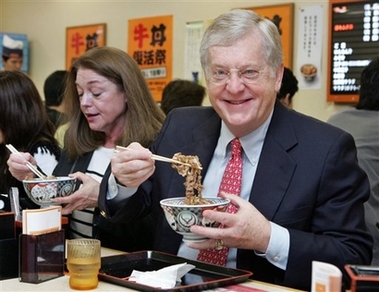


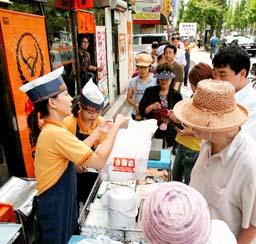


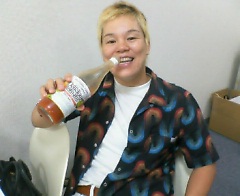
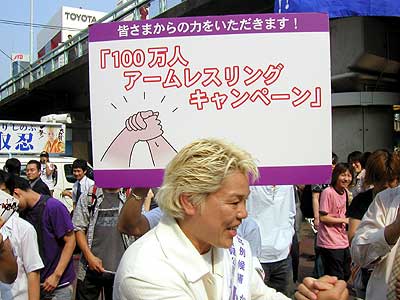


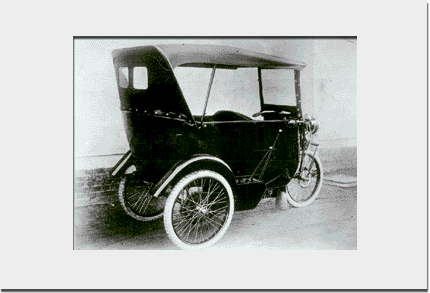
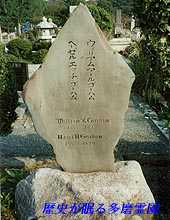 William, R. Gorham
William, R. Gorham